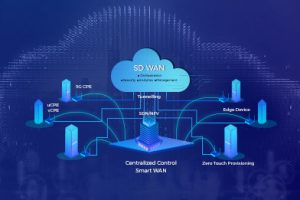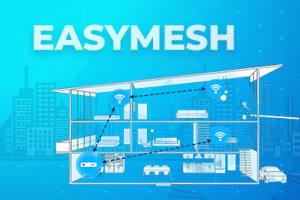With the official launch of Wi-Fi 6 last year, all Industries from Telecom to network providers are talking big on the capabilities and possible use cases of the new common name IEEE 802.11ax. Telecom operators and network providers are anxiously waiting to witness how Wi-Fi 6 can overcome current network limitations and enhance quality to surpass customer expectations. How is it going to impact their technology roadmap and business operations? Data and communications Technology domain are buzzing with 5G & Wi-Fi 6. Telcos around the world will be upgrading to 5G networks and it will be interesting to know how Wi-Fi 6 plays its part in enhancing the end-user services and experience.
Table of Contents
Wi-Fi 6: Citius, Tutius, Fortius
First of all, let’s take a look at what’s new with Wi-Fi 6. We can call it “Smart Wi-Fi Device”. A device which is smart enough to optimize operations as per the requirements. It will be 30 percent faster than the previous Wi-Fi 5, with theoretical data speeds of up to 9.6 Gigabits per second. It will have a better range, thanks to the Orthogonal Frequency-Division Multiple Access (OFDMA) technology. Wi-Fi 6 will also include a “beamforming” capability, as with 5G, meaningless “dead zones” in the home or office environment with a lower latency of upto 75 Percent. One of the major breakthroughs is the OFDMA technology which enables a device to manage traffic more efficiently with more channel efficiency. OFDMA technology uses smaller channel slices allowing more devices to share the same airtime according to the required bandwidth. This means more devices are able to utilize the network and increase capacity by up to 4 times, which would be very helpful in dense deployment zones such as home/offices, Airports, stations to sports arenas. There is a reintroduction of the 2.4 GHz band which was missing in Wi-Fi 5 for targeting IoT connectivity. Wi-Fi 6 also uses a new power-saving feature called Target Wake Time (TWT) which enables enhanced battery performance of IoT devices connected to it. It also increases efficiency and coverage allowing for a larger coverage area for low data rate clients such as IoT. With the up-gradation to the new security feature- WPA 3, it enables next-generation authentication and best in class encryption. With all the technological upgrades it also takes care of the legacy devices, which can talk as per their capability.
Why Wi-Fi 6 is gaining popularity with Telcos?
Let us discuss, how Wi-Fi 6 will support Operator strategy of rolling out next generation networks.
Traffic Optimization:
Operators can certainly create a synergy between 5G networks and Wi-Fi 6 and create competitive advantage to generate additional revenue opportunities. The synergy of Wi-Fi 6 and 5G will give operators new ways to optimize traffic across networks. The talk of the town is Wi-Fi offloading, Operators will optimize the traffic among wireless access points to find the best trade-off between user experience and network resource utilization. It also provides operators the ability to allocate traffic flows to the best access interface, considering real-time network conditions and user demand.
Meeting the demand:
Telecom providers have long viewed Wi-Fi as a source of revenue and differentiation in home, business and industrial markets. This is understandable considering that about half of IP traffic across is delivered via Wi-Fi. Telecom operators have to come up to meet the growing data hungry devices and create a competitive advantage in providing support to Smart city solutions, Growing IoT, IIoT, Smart Automotive and those deployments. This is only feasible when 5G and Wi-Fi 6 shake hands.
Meeting the coverage:
In high device density areas and where cellular lacks coverage like Indoor environment, Wi-Fi is frequently used as an offload and complementary technology to lighten congestion in the macro cellular network and augment capacity.
Meeting more Signal Strength:
Wi-Fi 6 will also have a huge impact on IoT. Increasing number of IoT devices will surpass the number of mobile phones and major traffic will be used by IoT rather than Smart Phones. Combined, 5G and Wi-Fi 6 will improve signal strength to support IoT deployments, Auto Driving Vehicles or always-on devices need resources with high-capacity networks. With additional capacity to save power for operation.
And ultimately, result in increased Revenue for Telcos:
As service providers continue to deploy 5G networks with expectations toward developing new, sustainable revenue streams, they could also look towards Wi-Fi 6 with those plans. Wi-Fi 6 delivers faster network performance, connects more devices simultaneously and provides multiple opportunities for delivering savings or increasing revenues.
With deep expertise in the networking and Wi-Fi sector, VVDN Technologies ushers Telecom operators and network equipment manufacturers to enable the next era of connectivity. By offering product engineering and manufacturing services for intelligent networking products by adopting the latest next-gen technologies including Wi-Fi 6 & 6E, Unlicensed Band Radios SD-WAN, Wi-Fi mesh, Wi-Fi sensing, 5G & automation, VVDN is the preferred ODM partner today. From identifying critical market requirements for Telecom Operators to the development of cutting-edge new products and services, VVDN combines extensive domain expertise, licensable software IPs, Wi-Fi testing labs, and best-in-class manufacturing infrastructure to help clients accelerate time-to-market and reduce risks and costs. VVDN’s core specialization lies in industrial-grade AP, consumer-grade AP, enterprise-grade AP, smart city, Unlicensed Band Radios, cloud network management system, etc.
Click here to know more about VVDN’s Networking and Wi-Fi expertise.























